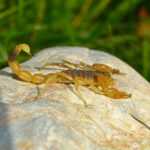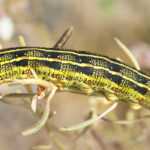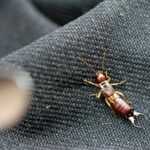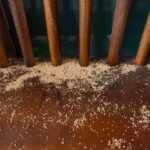Understanding Crickets: Fascinating Facts and Their Role in Ecosystems
Explore the fascinating world of crickets and discover their vital role in ecosystems.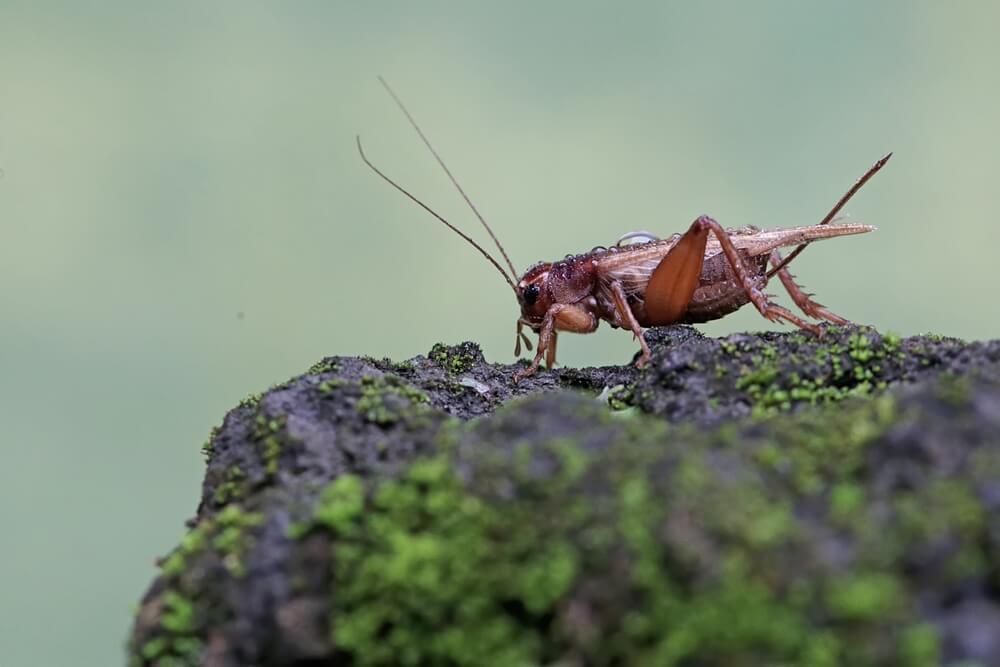
Best Tips for Understanding and Managing Crickets
Crickets, known for their nocturnal chirping, can be intriguing yet problematic insects. This article offers a comprehensive guide to help you identify, understand, and manage various cricket species. From their behavior to habitat preferences, you’ll find practical tips to keep these insects under control, whether they’re indoors or invading your yard.
Insights on Crickets
- Cricket identification relies on recognizing their physical characteristics, such as body length, color, and unique features like chirping and wing structure.
- Understanding the various types of crickets and their habitat preferences is crucial for effective management, as it enables targeted control measures.
- Implementing DIY control tips, such as sealing entry points and using traps, can be effective, but professional pest control services may be necessary for severe infestations.
Cricket Identification
There is a diverse palette of cricket colors, encompassing shades from green and brown to light yellowish-brown. Adult specimens and various other crickets are typically sized between one inch and two inches with an extended body structure accompanied by pronounced legs at the rear designed for leaping. Their antennae are noteworthy as well. They can be as long or longer than their bodies.
The wings of crickets hold particular interest due to their function in communication among male members of the species, though they have evolved more for sound production than flying capabilities. These key anatomical features aid significantly in distinguishing and managing different cricket types.
Each type of cricket—including house crickets, field crickets, camel crickets, Jerusalem crickets, and mole crickets—has its own set of distinct traits and habits. Recognizing these variances enables precise management strategies tailored toward controlling which specific type might inhabit your environment.
Types of Crickets
Crickets, part of the Insecta class and belonging to the Gryllidae family, are made up of numerous species known as true crickets. Each type has evolved distinct adaptations for survival across a variety of environmental conditions. Effective population control is aided by an understanding of these different cricket types.
Eastward from the Rocky Mountains, house crickets tend to invade domestic spaces seeking warmth during colder periods. Conversely, field crickets flourish in external environments such as fields, pastures along roadsides and within residential lawns—recognizing their preferred habitats facilitates prompt detection and management.
Included among various cricket types are ground crickets that favor low-lying areas near soil surfaces, and tree crickets typically residing amongst shrubbery or arboreal settings. Distinctive with their arched backs are camel crickets which gravitate toward humid locations like caves or home basements. Recognizing each species’ favored habitat plays a key role in managing them effectively.
Cricket Behavior
Male crickets are renowned for their chirping, a sound produced by the friction of their wings in an action known as stridulation. Such chirping has dual objectives: it lures female crickets and delineates territories among other male crickets. Each cricket species boasts its distinct chirp pattern, allowing identification through their vocalizations. Male crickets employ this method of communication to interact with others in their surroundings.
Active predominantly at night, these creatures exhibit nocturnal tendencies which aid them in evading predators while also facilitating the clear transmission of their sounds after dusk when you’re more likely to hear cricket calls. There is a correlation between temperature and how often they chirp. Warmer weather leads to more frequent chirping patterns that can even be used to estimate Fahrenheit temperatures based on the rate of noise production.
Beyond attraction songs, males’ use of chirps extends toward territorial defense warnings directed towards potential competitors. They may modify their call when feeling threatened—a behavioral cue valuable for assessing changes within cricket populations and implementing appropriate management strategies timely.
Habitat Preferences
Crickets are versatile insects capable of living in a variety of habitats shared by other jumping insects. They can be discovered in places such as meadows, woods, caves, and even within indoor areas tailored to their specific species. Their ability to adapt has led them to become a familiar presence across both cityscapes and countryside vistas.
Particularly, house crickets gravitate towards warm locales and are predominantly encountered eastward from the Rocky Mountains. In search of heat and sustenance during colder periods, they frequently invade homes. Conversely, field crickets prefer open spaces like fields, pastures beside roadsides or gardens where food is plentiful along with adequate shelter—they flourish naturally outdoors.
For an environment conducive to cricket habitation. Essential elements must include water supply plus breathable air complementing food availability along with security against predators combined ensuring adequate room for these omnivorous leaping creatures which alter their dietary patterns relative to at hand resources. Understanding their environmental preferences is imperative for managing cricket populations effectively.
Lifecycle and Reproduction
Crickets go through a three-phase life cycle, which includes the egg stage, nymph stage, and adult form. This development is known as incomplete metamorphosis. In one clutch, female crickets are capable of laying up to 200 eggs and they can lay new batches roughly every two weeks during their mature phase. The incubation period for these eggs is usually between 11 to 14 days under ideal warmth conditions.
Nymphs—the juvenile crickets—experience several growth phases involving molting where they shed their outer skin layer. They remain particularly susceptible until the exoskeleton that replaces it solidifies after shedding. Females often choose moist soil or decomposing organic matter as optimal locations for depositing their eggs because such environments promote successful hatching.
In approximately five to six weeks’ time, depending on temperature and surrounding environmental factors, crickets become sexually mature adults ready to reproduce themselves. A thorough understanding of cricket lifecycle stages aids in devising precise control strategies at times when breeding activity intensifies.
Diet and Predators
Camel crickets and other cricket species have a broad diet that includes the consumption of plant matter such as leaves, stems, and seeds. In urban environments, they are known to eat human food waste, which has led them to be labeled pests. Certain crickets located near aquatic areas may consume algae. Camel crickets particularly help in nutrient cycling within their habitats by feeding on decomposing plant material.
Some types of crickets demonstrate predatory tendencies by eating smaller insects whenever they can. This varied diet helps them adapt to multiple ecosystems. It also presents a potential threat to crops and ornamental plants due to damage caused by feeding activities. As scavengers, these insects contribute ecologically through the decomposition of deceased animals.
While having a wide-ranging palate benefits their survival rates across various settings at times resulting in agricultural harm – cricket populations are kept in check naturally by predators such as birds, reptiles, and small mammals. These interactions between prey-feeding habits and predator-prey dynamics underscore the importance for humans understanding how intricate control measures should be when managing cricket infestations effectively.
DIY Cricket Control Tips
To effectively manage crickets, it’s crucial to thwart their entry into your home. This can be achieved by sealing off any small openings or fissures that provide access from outside. Switching exterior lights to yellow bulbs may lessen the likelihood of crickets being drawn towards your residence. Employing potent aromas like lemon juice and peppermint could also repel these insects.
Employing homemade solutions such as a concoction of molasses and water within a container can serve as an effective means for trapping crickets. Utilizing a vacuum cleaner not only aids in eliminating live crickets, but also assists in disposing of their eggs, diminishing the chances of future cricket populations emerging within your dwelling space. Despite the utility of these do-it-yourself strategies, extensive infestations might necessitate engaging professional extermination services.
For those encountering persistent issues with cricket invasions, Responsible Pest Control delivers specialized expertise aimed at comprehensive management and control over such insect populations — offering relief without added stress or concerns. The skilled tactics employed by this service ensure both secure application and powerful effectiveness when alternative self-administered interventions prove inadequate.
Professional Pest Control Services
Employing professional services for cricket eradication can streamline the process and free up your time to concentrate on different tasks rather than tackling pest dilemmas. Engaging a pest control firm alleviates the burden of dealing with infestations, providing you with a worry-free resolution. They give priority to safety when employing chemical treatments, safeguarding against any potential health hazards for both children and animals.
Situated in Greater Phoenix, Mesa, and Tucson in Arizona, Responsible Pest Control is adept at delivering targeted assistance aimed at effectively combating cricket invasions. Their proficient team deploys safe yet potent strategies to rid crickets from your premises, ensuring it stays clear of pests.
Should you require thorough and dependable solutions for controlling pests like field crickets or house crickets within your domicile? Look no than Responsible Pest Control. With their deep-seated expertise coupled with unwavering dedication towards customer gratification, they stand out as an exemplary option for managing such intrusions efficiently.
Frequently Asked Questions
How can I identify crickets in my home?
To identify crickets in your home, look for insects that are black, brown, green, or yellowish brown, measuring one to two inches in length, with long antennae and noticeable hind legs.
Their distinctive appearance will help you confirm their presence.
What types of crickets are most common in homes?
House crickets and field crickets are the most common types found in homes, with house crickets particularly favoring warm indoor environments during cooler seasons.
Why do male crickets chirp?
Male crickets chirp primarily to attract female crickets for mating and to assert their territory against other males.
This behavior is vital for their reproductive success.
What do crickets eat?
Crickets primarily consume plant materials such as leaves, stems, and seeds, but they may also eat human food scraps in urban environments.
Therefore, their diet is quite diverse and adaptable.
When should I contact professional pest control for cricket infestations?
You should contact professional pest control for cricket infestations if DIY methods prove ineffective or if the infestation is severe.
This ensures safe and efficient management of the problem.
